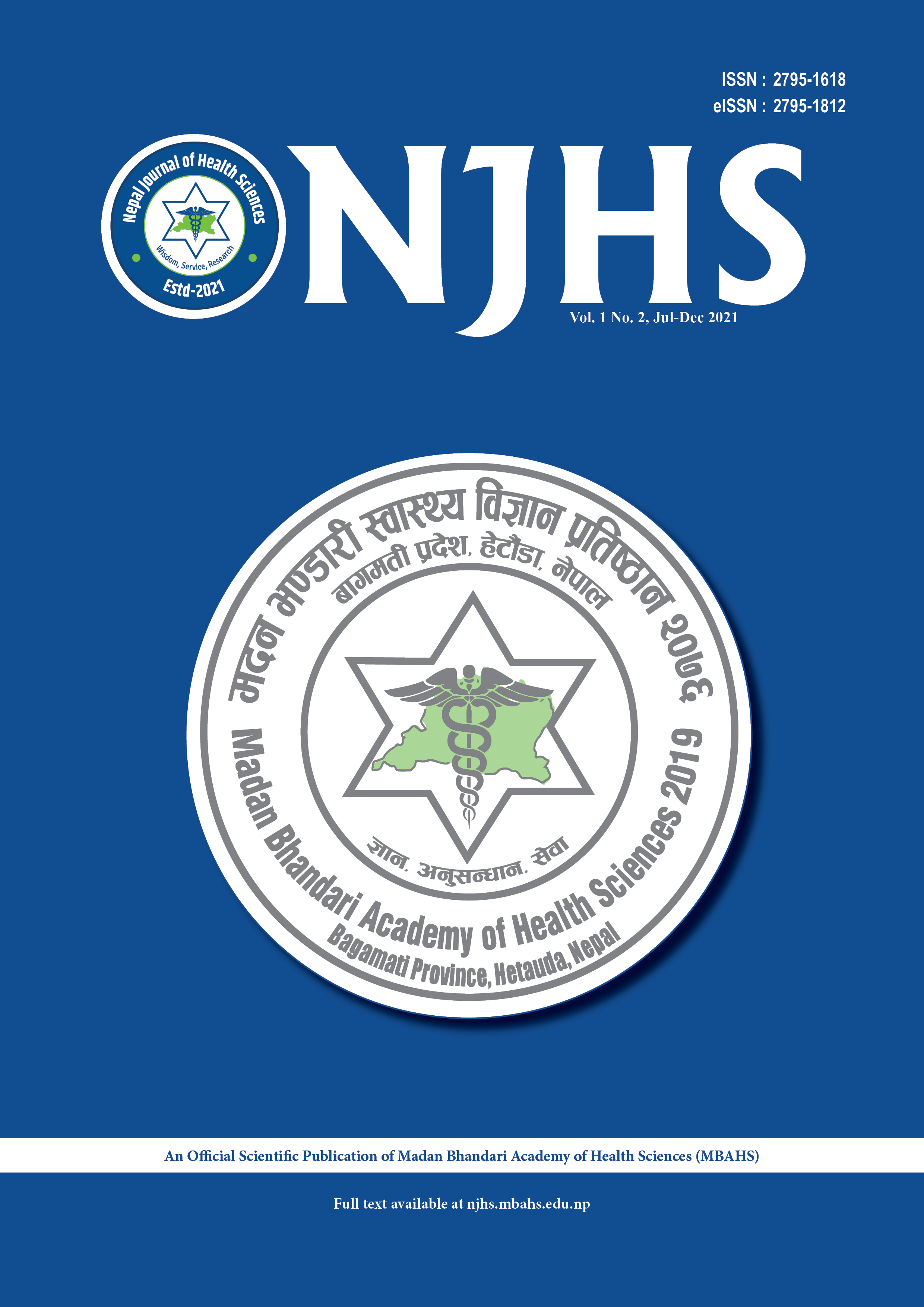Improved Diagnosis of Pulmonary Tuberculosis using Bleach (Sodium hypochlorite) Concentration Technique at Tertiary Care Hospital
DOI:
https://doi.org/10.3126/njhs.v1i2.42371Keywords:
Concentration; smear positivity; sodium hypochlorite; tuberculosis.Abstract
Introduction: In the Revised National Tuberculosis Control Program (RNTCP), microscopic examination of sputum for acid-fast bacilli (AFB) is currently the backbone for the diagnosis of pulmonary tuberculosis. Studies have shown liquefaction and concentration of sputum by 5% sodium hypochlorite is useful in providing increased sensitivity and safety for the handling of specimens.
Objective: To assess the utility of the 5% Sodium hypochlorite concentration method in increasing the sensitivity of smear microscopy for detection of AFB for diagnosis of pulmonary tuberculosis.
Methods: The study included a total of 1000 sputum samples from 500 patients with suspected pulmonary tuberculosis. Direct smears were prepared from the sputum samples as per RNTCP guidelines. The remaining sputum was used for bleach concentration and smears prepared from the concentrated material. Both smears were stained by Ziehl-Neelsen staining and screened for acid-fast bacilli and graded according to the RNTCP guidelines.
Results: A total of 158 samples (15.8%) from 89 patients were positive by a routine direct method whereas by concentration method 236 samples (23.6%) from 143 patients were found positive diagnosing additional 54 patients. The gain in sputum smear positivity of 7.8% over the routine method is highly significant (p=0.0000, χ2= 270) with a 10.8% increase in case detection.
Conclusions: Improvement in the sensitivity of smears microscopy will be useful in case detection of tuberculosis especially in resource-poor countries. The increased positivity of microscopy by bleach method indicates that would prove useful if included in the RNTCP to improve case detection.
Keywords: Concentration; smear positivity; sodium hypochlorite; tuberculosis.
Downloads

Downloads
Published
How to Cite
Issue
Section
License
Copyright (c) 2021 Saroj Kumar Thakur, Vishvesh Prakashchandra Bansal, Jyotsna Mishra, M.P. Bansal, Iswari Sapkota, Tapeshwar Yadav

This work is licensed under a Creative Commons Attribution 4.0 International License.



